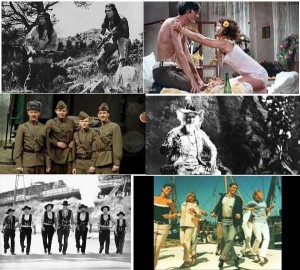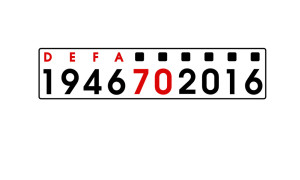 In 1946, just a year after Nazi Germany’s surrender, the Soviet Military Administration granted the first post-war license to the newly founded Deutsche Filmaktiengesellschaft (DEFA). Comprised of filmmakers who had returned from exile and others who had been waiting for a chance to work in the film industry of a democratic Germany, DEFA moved onto the old UFA premises and set out to become the German Democratic Republic’s official film company.
In 1946, just a year after Nazi Germany’s surrender, the Soviet Military Administration granted the first post-war license to the newly founded Deutsche Filmaktiengesellschaft (DEFA). Comprised of filmmakers who had returned from exile and others who had been waiting for a chance to work in the film industry of a democratic Germany, DEFA moved onto the old UFA premises and set out to become the German Democratic Republic’s official film company.
Only five months after getting the license, the first DEFA film, The Murderers Are among Us (dir. Wolfgang Staudte), premiered in Berlin and won international recognition—the first German film made after WWII.
When the DEFA Studios closed in 1990, they had produced almost 8,000 features, documentaries, shorts and animated films, and set standards for costume, make up, set design, and craftsmanship.
Even during the Cold War, many DEFA films were exported and screened internationally, often unbeknownst to audiences – how should West German television stations have explained to their viewers that the fairytale film they were watching with their children was in fact a product of DEFA, filmed in East Germany? When the Iron Curtain fell and DEFA films became accessible to general audiences, many were surprised to discover that DEFA had produced much more than propaganda films promoting communist ideals. Now, anyone could watch the “red” Westerns, sci-fi thrillers, melodramas, musicals, artist biopics and, of course, the children’s and fairytale films.
In honor of the septuagenarian anniversary, the Portland Germany Film Festival monthly series will screen KÄTHE KOLLWITZ: FILMIC IMAGES OF A LIFE in May, newly released in the USA for 2016.






